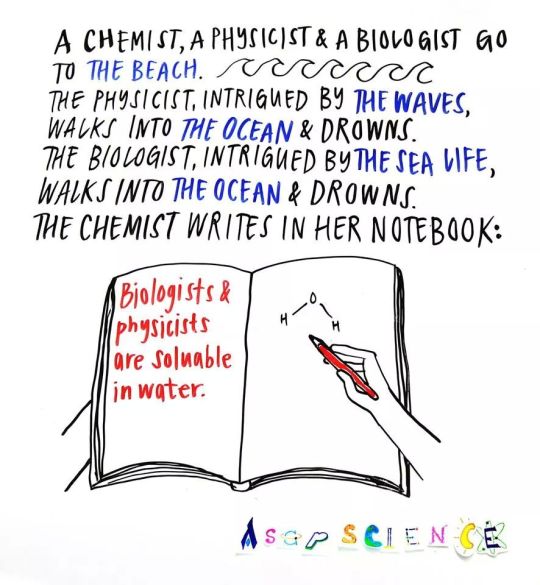Science posts – new science, old science, basic science, scientists, science and the public, history of science ... And art posts – art with scientific themes, scientific and biomedical illustration and visualization, visual science, science that has artistic appeal ... Used to be "So Much Older Then", and the Tumblr address still says that. The new avatar is now the world's most famous phytoplankton, the coccolithophore Emiliania huxleyi. I have a post on it called Coccospheres up close and personal. The tumblr-name Mucholderthen is from Bob Dylan, poet laureate of the mid to late 20th century, who sang "But I was so much older then, I'm younger than that now." Posting of copyright material is done under the guidelines of non-commercial fair use. Although no infringement of copyright is intended, if you believe that your ownership of an image or text has not been properly acknowledged, please let me know and I will fix it or, if necessary, take it down.
Don't wanna be here? Send us removal request.
Photo
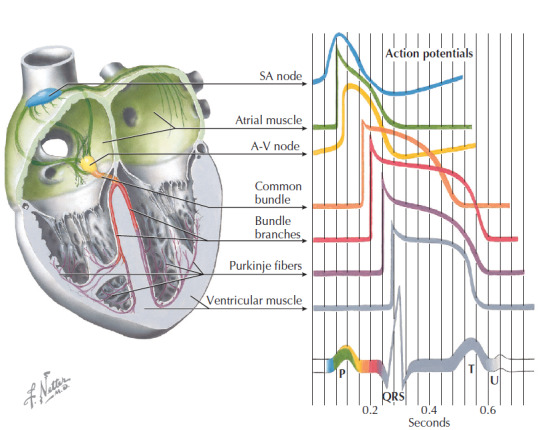
Electrical activity of the Heart
1K notes
·
View notes
Photo

MUTUALLY ASSURED DESTRUCTION In the constellation of Serpens Caput (Serpent’s Head), this tightly-packed group of galaxies is slowly tearing itself apart. These beautiful scattered jewels are collectively known as Seyfert’s Sextet, but although the name implies “six,” only four of the visible galaxies are locked in the dance of death. The still-intact spiral galaxy near the middle of the image is about five times more distant than the main group, and the sixth member is actually a tidal tail resulting from gravitational interactions. The gravitational forces that are warping and blurring these galaxies may someday pull them together into one single galaxy, but such cosmic changes take time. The gravitational interactions we see here happened over billions of years, and the dance is likely to last billions more. -RLO Image: NASA/ESA, J. English (U. Manitoba), S. Hunsberger, S. Zonak, J. Charlton, S. Gallagher (PSU), and L. Frattare (STScI) Source
364 notes
·
View notes
Link
Regulators may let companies store radioactive rods in on-site pools for up to 120 years.
#nuclear#radiation#environment#environmental health#nuclear waste#energy#NRC#Nuclear Regulatory Commission
16 notes
·
View notes
Photo

Abbot Handerson Thayer and others, INSECTS— Colored beetles, landscape, study folder for book Concealing Coloration in the Animal Kingdom, n.d., various media and collage on paperboard, Smithsonian American Art Museum, Gift of the heirs of Abbot Handerson Thayer
-Bridget
#beetle#Coleoptera#Insecta#books#illustration#Abbot Handerson Thayer#Smithsonian American Art Museum#Smithsonian#Smithsonian Institution
379 notes
·
View notes
Text
Be a part of the great Internet Slowdown





On September 10th, just a few days before the FCC’s net neutrality comment deadline, internet users and tech companies will unite for the “Internet Slowdown” to show the world what’s at stake if we lose net neutrality, the “First Amendment of the Internet.”
We need everyone’s help right now to make this huge. Here’s what you can do right now to help make the Internet Slowdown go viral:
1. Forward this post to your friends and share the image with your social networks using the buttons above. We need people across the web to know about the slowdown so they can join on September 10th.
2. Follow us on Twitter and Facebook so we can reach you with urgent updates and action items as the big day approaches.
3. If you can, please chip in $10 (or more!) to help make the Internet Slowdown possible. We’re building tools that any website or organization can use to promote their own net neutrality action, because we care about the movement. But it’s not cheap! Help us sustain this critical work.
4. Contact your favorite websites, apps, and online services and ask them to join the Slowdown! Send them to this page: https://BattleForTheNet.com/sept10th
5. If you have your own website or app, put the Internet Slowdown widget on it. If you really want to be an Internet Defender, help out by using your own website to spread the word. It’s as easy as adding the widget/modal code found here:
https://BattleForTheNet.com/sept10th#modal
3K notes
·
View notes
Text
The Internet Slowdown is coming, and it's going to be huge.
Hey there,
Exciting news! The Internet Slowdown net neutrality protest planned for September 10th is really taking off. This morning, a dozen of the world’s largest websites announced that they’re joining in a big way. Sites you know and love like Etsy, Kickstarter, Wordpress, Vimeo, Mozilla, Namecheap, Foursquare, imgur, and reddit.
Will you join too?
Everyone has a role in the Internet Slowdown. Click here to find out what YOU can do.

28K notes
·
View notes
Photo


Scientists Find Evidence for Tectonic Plates on Jupiter’s Moon Europa
Scientists have found evidence of plate tectonics on Jupiter’s moon Europa. This indicates the first sign of this type of surface-shifting geological activity on a world other than Earth.
Researchers have clear visual evidence of Europa’s icy crust expanding. However, they could not find areas where the old crust was destroyed to make room for the new. While examining Europa images taken by NASA’s Galileo orbiter in the early 2000s, planetary geologists Simon Kattenhorn, of the University of Idaho, Moscow, and Louise Prockter, of the Johns Hopkins University Applied Physics Laboratory in Laurel, Maryland, discovered some unusual geological boundaries.
"We have been puzzled for years as to how all this new terrain could be formed, but we couldn’t figure out how it was accommodated," said Prockter. "We finally think we’ve found the answer."
Plate tectonics is the scientific theory that Earth’s outer layer is made up of plates or blocks that move, which accounts for why mountain and volcanoes form and earthquakes happen…
(read more: Jet Propulsion Laboratory)
Image: Noah Kroese, I.NK
539 notes
·
View notes
Text
Who speaks for Earth?
“Don’t sit this one out. Do something. You are by accident of fate alive at an absolutely critical moment in the history of our planet.”
— Carl Sagan
116 notes
·
View notes
Photo

Why do the dots disappear? Nature News via Why Evolution Is True
This is one of the most baffling illusions I've ever seen.
Take a look at the gif above. First, look at any yellow dot as the figure moves. The yellow dot remains present and stationary.
If you concentrate on all three yellow dots, they remain there as well.
But now concentrate on the central green dot. You will see one or more of the yellow dots disappearing and then reappearing sporadically. They are not—this is an optical illusion.
The dots remain and your brain simply doesn't register their presence from time to time. Weird, eh?
Continue reading in "Why Evolution Is True" ..,.
Check out the original at Nature News and Comment ...
454 notes
·
View notes
Photo

stem cell in the eye of a needle
colored SEM
credit: Steve Gschmeissner
495 notes
·
View notes
Photo


OVER 9K SPECIES SHOW FIRTS ATLAS OF MARINE LIFE FROM ANTARCTICA
Details about the marine life of 9000 species that inhabit Antarctica, from tiny microbes to large cetaceans were collected for the first time in an atlas on the remote and icy southern seas. The ‘Biogeographic Atlas of the Southern Ocean’ was developed over four years by an international team of marine biologists and oceanographers and contributions of more than a hundred scientists from Australia, New Zealand, USA, France, Belgium, Spain or Chile. This work, coordinated by the Scientific Committee on Antarctic Research (SCAR) and presented at a scientific conference held in New Zealand this week, contains 66 chapters, complete and comprehensive data of some 9,000 species and 800 maps and 100 color photographs. Researcher compiled data on the occurrence, evolution, genetic changes and effects of climate change on all of them.
The database described from microorganisms to large cetaceans
Over a hundred of scientists have worked on the atlas for four years
Still fall outside the description 1,000 to 2,000 species
First chapter is available free
MORE iATLAS
135 notes
·
View notes
Photo
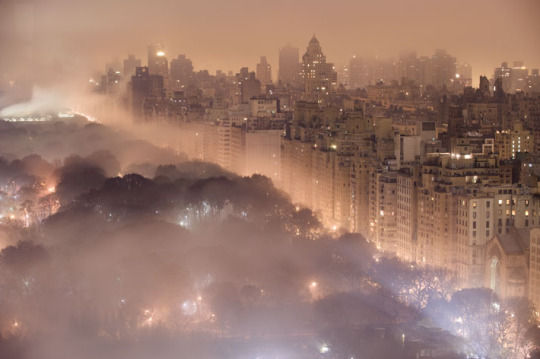
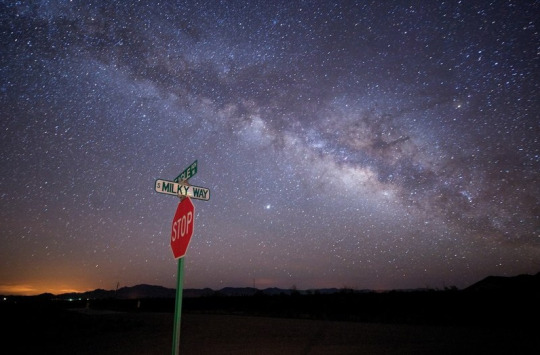
Lighting up the Night
Humans are not nocturnal creatures. Our eyes have adapted to living in the light, and over the last few hundred years, we have slowly brightened the night so we can inhabit it more freely. Half the world is haloed in networks of light that shine so brightly they can be seen in space, but while they may look beautiful from above, there are consequences. Badly-designed lighting often shines light in all directions instead of just where it’s wanted, and this extra light washes out the darkness and pollutes the sky with brightness, altering natural light levels. Because light is such a powerful biological force, this messes with the rhythms animals including ourselves have adapted to—for example, birds migrating at night become disoriented by unnatural light, and are especially apt to collide with brilliantly-lit buildings. The vacant orange haze that light pollution casts across the sky also empties it of stars. This is why most observatories are located in isolated places, which is sad because the average person can no longer lift their eyes to see the universe above—the infinite canvas of stars and planets and galaxies is unknown to them. Remedying this pollution is relatively simple: altering the design of light installations can immediately block wasted light, helping to save energy and reduce carbon dioxide emissions. Flagstaff, Arizona, made one of the earliest efforts to minimise light pollution to protect the nearby Lowell Observatory, and it became the first International Dark Sky City in 2001. Many other places have made the same efforts and have become Dark Sky Preserves—sanctuaries free from artificial light, where the darkness is kept so pristine that the universe soars above.
(Image Credit: Jim Richardson)
3K notes
·
View notes
Photo
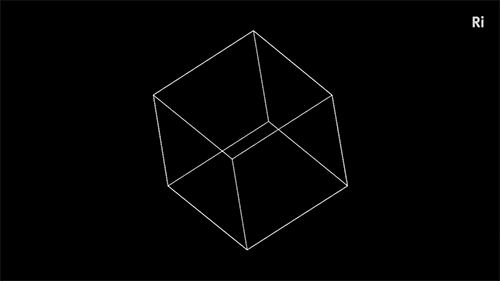
In which direction is the cube spinning? Now blink, or look away and look back. Is it still spinning in the same direction?
A Necker Cube is an ambiguous line drawing. Our brain can create different interpretations of it.
This clip was part of the Christmas Lectures 2011 presented by Professor Bruce Hood - Lecture One: What’s in your head? Watch it in full on the Ri Channel.
#illusion#necker cube#brain#box#geometry#cube#spin#eye#trick#christmas lectures#xmaslectures#bruce hood#Royal Instituion#Ri#Ri channel#GIF#science
822 notes
·
View notes
Photo
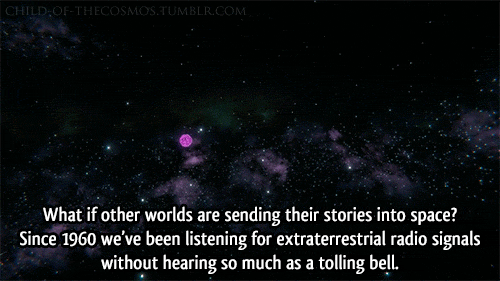

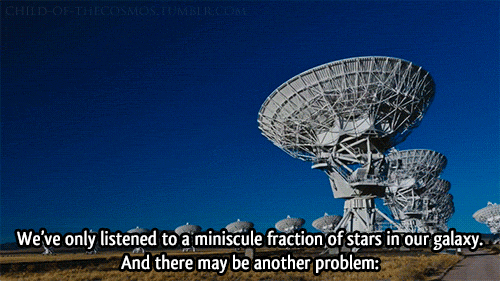
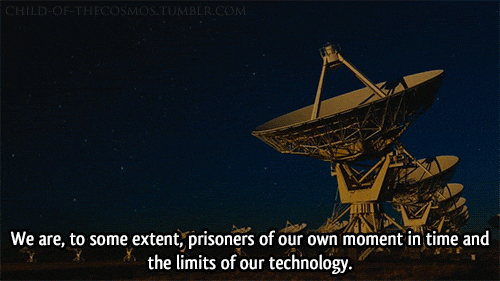
Radio and television broadcasting may be only a brief passing phase in our technological development. When we imagine alien civilizations broadcasting signals with radio telescopes, are we any different from earlier generations who imagined riding cannon shells to the moon? Civilizations even slightly more advanced than ours may have already moved on to some other mode of communication, one that we have yet to discover or even imagine. Their messages could be swirling all around us at this very moment, but we lack the means to perceive them just as all of our ancestors, up to a little more than a century ago, would have been oblivious to the most urgent radio signal from another world.
But there’s another more troubling possibility: Civilizations, like other living things, may only live so long before perishing due to natural causes, or violence, or self-inflicted wounds. Whether or not we ever make contact with intelligent alien life may depend on a critical question: What is the life expectancy of a civilization?
- Episode 11: The Immortals, Cosmos: A SpaceTime Odyssey
#cosmos: a spacetime odyssey#cosmos a spacetime odyssey#neil degrasse tyson#carl sagan#cosmos gifs#cosmos#astronomy#science
6K notes
·
View notes
Photo

This year’s Longitude Prize is focused on the growing problem of antibiotic resistant bacteria. They’ve put together a nice image, shown here, which showcases what they term ‘the ten most dangerous antibiotic resistant bacteria’. You can read more detail on each of them here:http://www.nesta.org.uk/news/antibiotic-resistant-bacteria The prize offers a £10 million prize fund for the development of a cheap, accurate, and easy to use bacterial infection test kit, which will allow doctors to prescribe the correct antibiotics at the correct time for patients, to try to help minimise the development of antibiotic resistance.
3K notes
·
View notes

